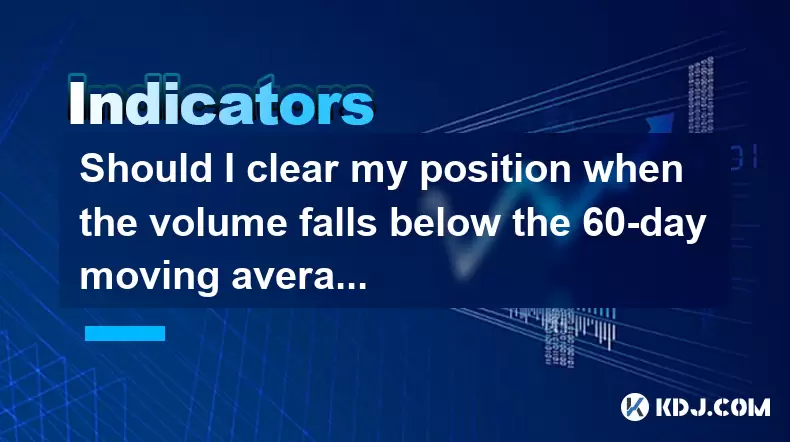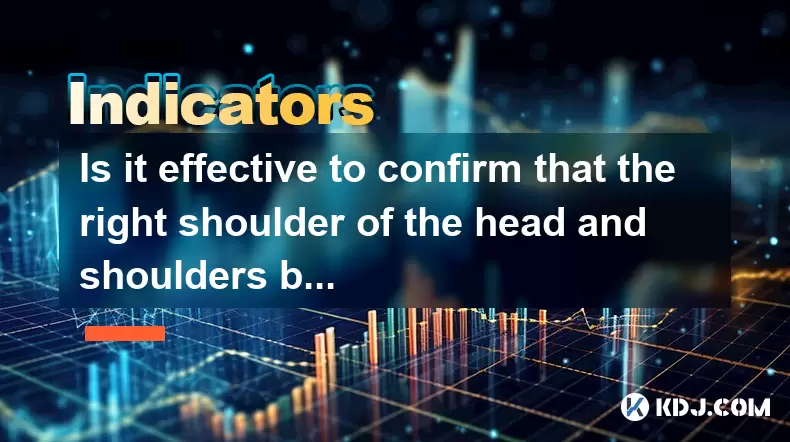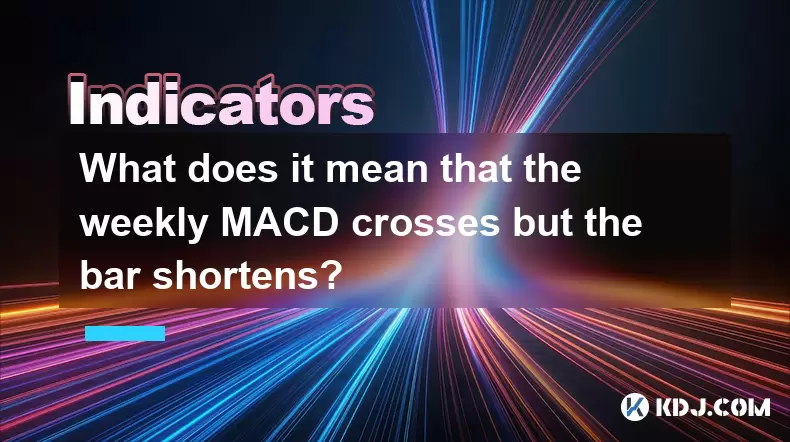-
 Bitcoin
Bitcoin $106,754.6083
1.33% -
 Ethereum
Ethereum $2,625.8249
3.80% -
 Tether USDt
Tether USDt $1.0001
-0.03% -
 XRP
XRP $2.1891
1.67% -
 BNB
BNB $654.5220
0.66% -
 Solana
Solana $156.9428
7.28% -
 USDC
USDC $0.9998
0.00% -
 Dogecoin
Dogecoin $0.1780
1.14% -
 TRON
TRON $0.2706
-0.16% -
 Cardano
Cardano $0.6470
2.77% -
 Hyperliquid
Hyperliquid $44.6467
10.24% -
 Sui
Sui $3.1128
3.86% -
 Bitcoin Cash
Bitcoin Cash $455.7646
3.00% -
 Chainlink
Chainlink $13.6858
4.08% -
 UNUS SED LEO
UNUS SED LEO $9.2682
0.21% -
 Avalanche
Avalanche $19.7433
3.79% -
 Stellar
Stellar $0.2616
1.64% -
 Toncoin
Toncoin $3.0222
2.19% -
 Shiba Inu
Shiba Inu $0.0...01220
1.49% -
 Hedera
Hedera $0.1580
2.75% -
 Litecoin
Litecoin $87.4964
2.29% -
 Polkadot
Polkadot $3.8958
3.05% -
 Ethena USDe
Ethena USDe $1.0000
-0.04% -
 Monero
Monero $317.2263
0.26% -
 Bitget Token
Bitget Token $4.5985
1.68% -
 Dai
Dai $0.9999
0.00% -
 Pepe
Pepe $0.0...01140
2.44% -
 Uniswap
Uniswap $7.6065
5.29% -
 Pi
Pi $0.6042
-2.00% -
 Aave
Aave $289.6343
6.02%
Should I clear my position when the volume falls below the 60-day moving average?
When volume drops below the 60-day moving average, it may signal weakening momentum, prompting traders to reassess positions or consider partial exits.
Jun 17, 2025 at 05:42 am

Understanding the 60-Day Moving Average in Cryptocurrency Trading
In cryptocurrency trading, the 60-day moving average is a widely used technical indicator that helps traders assess the long-term trend of an asset. This average smooths out price data over the past 60 days, offering a clearer picture of whether an asset is trending upward or downward. Traders often use this metric to filter out short-term volatility and make more informed decisions about when to enter or exit positions.
When analyzing volume alongside price action, it’s essential to understand how these two metrics interact. The volume falling below the 60-day moving average could signal weakening interest in a particular cryptocurrency. However, interpreting this signal requires deeper analysis beyond surface-level observations.
The Significance of Volume in Cryptocurrency Markets
Volume plays a crucial role in confirming trends and potential reversals in crypto markets. High volume typically indicates strong market participation and conviction behind a price movement. Conversely, low volume during a price rise or drop may suggest a lack of genuine interest or momentum.
For instance, if Bitcoin's price rises but its volume remains below the 60-day average, it may imply that institutional players or major holders aren't actively participating. This can lead to false breakouts or weak rallies that quickly reverse. Therefore, traders must pay attention to both price action and volume dynamics when making position decisions.
Why Some Traders Consider Exiting When Volume Drops
Some traders believe that when volume drops below the 60-day average, it signals a potential reversal or consolidation phase. In such cases, they might consider clearing their positions partially or fully to protect profits or avoid sudden downturns.
This strategy is rooted in the idea that low volume implies a lack of support for the current trend. If you're holding Ethereum and notice that its daily volume has consistently fallen below the 60-day average while the price is stagnant or slightly rising, it may indicate that bulls are losing control. At this point, exiting may seem prudent to some traders who rely on momentum-based strategies.
However, this decision should not be made in isolation. Other indicators like RSI, MACD, and order book depth should also be considered before taking any action.
How to Evaluate Whether You Should Clear Your Position
Before deciding to clear your position due to declining volume, there are several steps you should take:
Check the broader market context: Is the entire market experiencing lower volume, or is it isolated to one asset? A general market-wide decline in volume may not necessarily mean a bearish signal for a specific cryptocurrency.
Analyze historical patterns: Look back at previous instances where volume fell below the 60-day average. Did it result in a significant price drop, or did the price continue sideways with low volatility?
Cross-reference with other indicators: Use tools like moving average crossovers, Bollinger Bands, or Fibonacci retracement levels to confirm whether the trend is truly reversing.
Assess your risk tolerance: If you're a conservative trader, you might prefer to reduce exposure even on early signs of weakness. More aggressive traders might hold through low-volume periods, anticipating a breakout.
By following these steps, you can make a more informed decision rather than relying solely on volume metrics.
Technical Steps to Monitor Volume Relative to the 60-Day Average
To monitor volume relative to the 60-day moving average, follow these detailed steps using popular trading platforms like Binance or TradingView:
Open your preferred charting platform: Log into your account and select the cryptocurrency you want to analyze.
Enable volume indicators: On TradingView, click on "Indicators" and search for "Volume by Exchange" or simply enable the default volume bars beneath the price chart.
Add the 60-day moving average to the volume chart: Click on "Add Indicator," search for "Moving Average," and apply it to the volume series instead of price. Set the length to 60.
Customize settings for clarity: Adjust the color and thickness of the volume MA line so it stands out against the volume bars.
Monitor real-time changes: Watch how each candlestick's volume compares to the 60-day average line. If multiple candles fall below this line without strong price movement, it could be a sign of waning interest.
This process allows you to visually track whether volume is supporting or contradicting price movements, which is critical in making timely decisions.
Alternative Strategies Instead of Clearing Positions
Rather than clearing your position entirely when volume drops below the 60-day average, consider alternative approaches:
Trailing stop-loss orders: These allow you to lock in gains while still giving the trade room to breathe if the price continues to move favorably later.
Partial profit-taking: Sell a portion of your holdings to secure some returns while keeping the rest open for potential future upside.
Switching to stablecoins or altcoins: If you’re concerned about a specific coin’s volume drop, consider rotating your funds into assets showing stronger momentum.
These strategies provide flexibility and help maintain market exposure without fully exiting a position based on a single indicator.
Frequently Asked Questions (FAQ)
Q: Can I rely solely on volume compared to the 60-day average for trading decisions?
A: No, volume alone shouldn’t dictate your trades. It should be used in conjunction with other technical indicators and fundamental assessments to form a well-rounded trading strategy.
Q: How do I calculate the 60-day moving average of volume manually?
A: To calculate it manually, sum up the daily volume over the last 60 days and divide the total by 60. Repeat this process each day to update the average as new data comes in.
Q: What timeframes are best suited for analyzing volume relative to the 60-day average?
A: Daily charts are most commonly used for this type of analysis, especially for swing traders or long-term investors. Intraday traders may find shorter timeframes more relevant.
Q: Does volume dropping below the 60-day average always precede a price drop?
A: Not necessarily. There are many instances where prices remain stable or even rise despite low volume. Always look for confirmation from other indicators before assuming a price decline.
Disclaimer:info@kdj.com
The information provided is not trading advice. kdj.com does not assume any responsibility for any investments made based on the information provided in this article. Cryptocurrencies are highly volatile and it is highly recommended that you invest with caution after thorough research!
If you believe that the content used on this website infringes your copyright, please contact us immediately (info@kdj.com) and we will delete it promptly.
- 2025-W Uncirculated American Gold Eagle and Dr. Vera Rubin Quarter Mark New Products
- 2025-06-13 06:25:13
- Ruvi AI (RVU) Leverages Blockchain and Artificial Intelligence to Disrupt Marketing, Entertainment, and Finance
- 2025-06-13 07:05:12
- H100 Group AB Raises 101 Million SEK (Approximately $10.6 Million) to Bolster Bitcoin Reserves
- 2025-06-13 06:25:13
- Galaxy Digital CEO Mike Novogratz Says Bitcoin Will Replace Gold and Go to $1,000,000
- 2025-06-13 06:45:13
- Trust Wallet Token (TWT) Price Drops 5.7% as RWA Integration Plans Ignite Excitement
- 2025-06-13 06:45:13
- Ethereum (ETH) Is in the Second Phase of a Three-Stage Market Cycle
- 2025-06-13 07:25:13
Related knowledge

How to interpret the low opening the next day after the long lower shadow hits the bottom?
Jun 18,2025 at 12:22am
Understanding the Long Lower Shadow Candlestick PatternIn technical analysis, a long lower shadow candlestick is often seen as a potential reversal signal in a downtrend. This pattern occurs when the price opens, trades significantly lower during the session, but then recovers to close near the opening price or slightly above. The long wick at the botto...

How to operate the RSI indicator repeatedly in the 40-60 range?
Jun 18,2025 at 12:56am
Understanding the RSI Indicator and Its RelevanceThe Relative Strength Index (RSI) is a momentum oscillator widely used in cryptocurrency trading to measure the speed and change of price movements. Typically, the RSI ranges from 0 to 100, with levels above 70 considered overbought and below 30 considered oversold. However, when the RSI repeatedly stays ...

How strong is the MACD golden cross below the zero axis?
Jun 17,2025 at 11:00pm
Understanding the MACD Indicator in Cryptocurrency TradingThe Moving Average Convergence Divergence (MACD) is one of the most widely used technical indicators among cryptocurrency traders. It helps identify potential trend reversals, momentum shifts, and entry or exit points. The MACD consists of three main components: the MACD line, the signal line, an...

How effective is the golden cross of the William indicator double line in the oversold area?
Jun 17,2025 at 11:56pm
Understanding the William Indicator and Its Double Line SetupThe William %R (Williams Percent Range) is a momentum oscillator used to identify overbought or oversold conditions in a market. It ranges from 0 to -100, with readings above -20 considered overbought and below -80 deemed oversold. The double line setup refers to plotting two different timefra...

Is it effective to confirm that the right shoulder of the head and shoulders bottom volume at the 30-minute level is enlarged?
Jun 17,2025 at 11:42pm
Understanding the Head and Shoulders Pattern in Cryptocurrency TradingThe head and shoulders pattern is one of the most recognized reversal patterns in technical analysis, especially within cryptocurrency trading. It typically signals a potential shift from a bullish trend to a bearish one. This pattern consists of three peaks: the left shoulder, the he...

What does it mean that the weekly MACD crosses but the bar shortens?
Jun 18,2025 at 01:07am
Understanding the MACD IndicatorThe Moving Average Convergence Divergence (MACD) is a popular technical analysis tool used in cryptocurrency trading to identify potential trend reversals and momentum shifts. It consists of three main components: the MACD line, the signal line, and the histogram (also known as the bar). The MACD line is calculated by sub...

How to interpret the low opening the next day after the long lower shadow hits the bottom?
Jun 18,2025 at 12:22am
Understanding the Long Lower Shadow Candlestick PatternIn technical analysis, a long lower shadow candlestick is often seen as a potential reversal signal in a downtrend. This pattern occurs when the price opens, trades significantly lower during the session, but then recovers to close near the opening price or slightly above. The long wick at the botto...

How to operate the RSI indicator repeatedly in the 40-60 range?
Jun 18,2025 at 12:56am
Understanding the RSI Indicator and Its RelevanceThe Relative Strength Index (RSI) is a momentum oscillator widely used in cryptocurrency trading to measure the speed and change of price movements. Typically, the RSI ranges from 0 to 100, with levels above 70 considered overbought and below 30 considered oversold. However, when the RSI repeatedly stays ...

How strong is the MACD golden cross below the zero axis?
Jun 17,2025 at 11:00pm
Understanding the MACD Indicator in Cryptocurrency TradingThe Moving Average Convergence Divergence (MACD) is one of the most widely used technical indicators among cryptocurrency traders. It helps identify potential trend reversals, momentum shifts, and entry or exit points. The MACD consists of three main components: the MACD line, the signal line, an...

How effective is the golden cross of the William indicator double line in the oversold area?
Jun 17,2025 at 11:56pm
Understanding the William Indicator and Its Double Line SetupThe William %R (Williams Percent Range) is a momentum oscillator used to identify overbought or oversold conditions in a market. It ranges from 0 to -100, with readings above -20 considered overbought and below -80 deemed oversold. The double line setup refers to plotting two different timefra...

Is it effective to confirm that the right shoulder of the head and shoulders bottom volume at the 30-minute level is enlarged?
Jun 17,2025 at 11:42pm
Understanding the Head and Shoulders Pattern in Cryptocurrency TradingThe head and shoulders pattern is one of the most recognized reversal patterns in technical analysis, especially within cryptocurrency trading. It typically signals a potential shift from a bullish trend to a bearish one. This pattern consists of three peaks: the left shoulder, the he...

What does it mean that the weekly MACD crosses but the bar shortens?
Jun 18,2025 at 01:07am
Understanding the MACD IndicatorThe Moving Average Convergence Divergence (MACD) is a popular technical analysis tool used in cryptocurrency trading to identify potential trend reversals and momentum shifts. It consists of three main components: the MACD line, the signal line, and the histogram (also known as the bar). The MACD line is calculated by sub...
See all articles

























































































